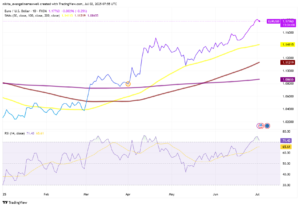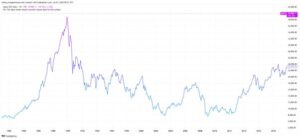The Governor of the Reserve Bank of Australia (RBA), Michele Bullock, recently delivered a significant message: Australian borrowers hoping for a rate cut will likely have to keep waiting. This comes as a blow to millions of Australians with mortgages, especially during the ongoing cost-of-living crisis. While countries like the U.S., U.K., Canada, and New Zealand have begun cutting rates, Australia has not followed suit.
High Interest Rates Remain Unchanged
Currently, Australia's cash rate remains at a 12-year high of 4.35%. Despite many nations globally adjusting their monetary policies, Australia's high inflation rate has made the RBA hesitant to cut rates. Bullock pointed out that while headline inflation has declined, underlying inflation remains stubbornly high. She noted that price increases in services and continued strong demand are the main factors preventing inflation from falling rapidly.
According to Australian data, the core inflation rate as of June stood at 3.9%, well above the RBA’s target range of 2% to 3%. Bullock further indicated that inflation might not return to the target range until 2026, meaning interest rates are unlikely to decrease in the near term.
Impact of Immigration and High Government Spending
Bullock also highlighted how high immigration rates and significant government spending have impacted the economy. She stated that the increased demand for goods and services caused by the influx of immigrants has contributed to rising inflation. With more temporary residents, such as international students, entering the Australian market, their spending has further bolstered demand across the economy, making it difficult for prices to stabilize.
Additionally, Bullock expressed caution regarding the federal government's $300 energy rebate. While the measure may offer temporary relief to household budgets, it is unlikely to have a significant impact on core inflation. She explained that, although consumer price index (CPI) inflation might decrease in the short term, this does not reflect the underlying inflation driven by sectors such as services, which remain the crux of the issue.
Long-Term Economic Outlook for Australia
The RBA's latest projections suggest that inflation may not fall below 3% until the end of 2025. This extended timeline for inflation to return to target indicates that Australian borrowers could face a prolonged period of high-interest rates.
Despite this, the RBA has not ruled out the possibility of further rate hikes. Bullock explained that although the U.S. Federal Reserve recently made a substantial rate cut, Australia’s economic situation is different from other countries. For example, countries like New Zealand and Canada have seen sharper increases in unemployment rates and faster inflation declines. These factors have allowed those nations to implement rate cuts, while Australia must maintain a more cautious approach to its monetary policy.
Impact on Borrowers
For millions of Australian mortgage holders, this news is concerning. In the past two years, they have faced 13 interest rate hikes, marking the most aggressive cycle of rate increases since the late 1980s. The high rates have placed significant pressure on household budgets, with many reducing discretionary spending to cope with rising mortgage repayments.
Australia’s economic growth has also slowed as a result. Recent figures show that growth is now at just 1%, one of the lowest levels since the recession of 1991. Bullock noted that while inflation remains elevated, consumer spending has contracted sharply, particularly in areas like housing, transportation, and leisure-related expenses.
Conclusion
In summary, the Reserve Bank of Australia’s recent decision indicates that borrowers should not expect rate cuts in the short term. High immigration levels, strong consumer demand, and persistent inflation are the key reasons why the RBA remains cautious about adjusting its monetary policy. Despite the pressure from rising living costs, the current economic conditions in Australia are not yet conducive to following other countries in reducing rates.
For forex market investors, Australia’s monetary policy is likely to remain steady for the foreseeable future. While many countries globally have begun adjusting their rates, Australia’s unique economic conditions have prompted a more cautious approach. This suggests that the Australian dollar may experience ongoing volatility in the forex markets. Investors should keep a close watch on inflation data and immigration trends, as these factors will play a significant role in influencing future decisions by the RBA.





